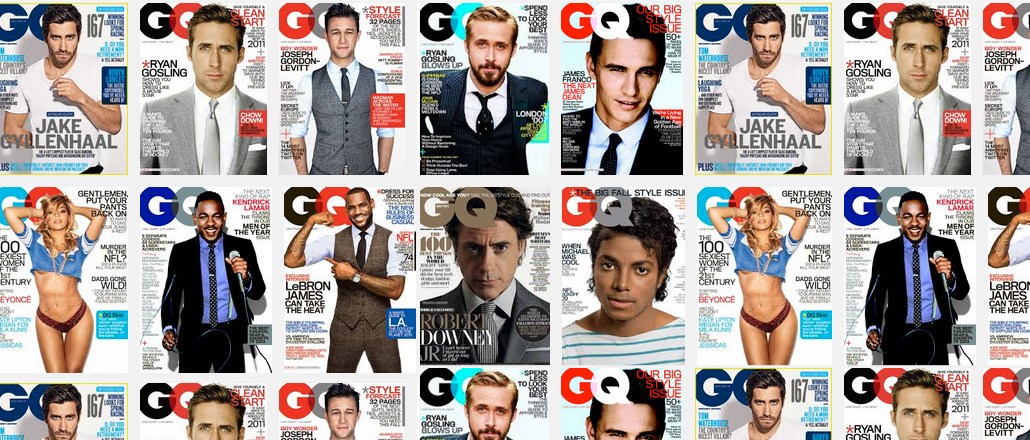
Howard Mittman is unique at Condé Nast. As publisher of Wired, he grew the tech publication’s digital revenues to 50 percent of overall sales. Now, as a far more difficult second act, Mittman is trying to do the same at men’s title GQ, where he became publisher in September. His goal is a big one: to grow GQ’s digital ad revenue to 50 percent of all ad revenue, from about 20 percent today.
“I’m here to do at GQ what I did at Wired,” Mittman said.
At Wired, Mittman diversified the advertiser mix beyond its core technology to include fashion and lifestyle brands. Both GQ and Wired have similar combined audience sizes across all platforms. But while Wired’s relative youth, small size and early-adopter editorial mix have always made it a challenge to explain to marketers, GQ’s iconic, straightforward brand makes it an easier sell. It’s not every brand that gets used as an adjective, after all.
“I’ve heard a tremendous amount around GQ as a brand,” Mittman said. “It means something in the greater lexicon of what it means to be an American male. What I do think we need to do a better job of across the publishing community is roll out low-cost, easily implementable solutions. The mantra I hear most often from advertisers is, when they look at their ad partners, they’re increasingly getting frustrated with the scattershot approach.”
To that end, Mittman has introduced 18 new digital products in his first three months with a focus on social influence and targetability. Some are new, while others were brought over from his days at Wired. Some examples of both:
The Accelerator, a social ad product that enables an advertiser to capitalize on traffic spikes. It was developed by Wired sibling publication Ars Technica and has since been made available to other Condé Nast brands.
Search retargeting, which serves a marketer’s ad to visitors who have searched for a term relevant to the marketer.
Weather-based targeting, which lets an advertiser serve contextually relevant ads to consumers (so a visitor whose hometown is forecasting rain might see umbrella ads, for example).
GQ Social ads, which allow an advertiser to target people coming to GQ.com from specific social media platforms. Like a product Mittman introduced at Wired, the pricing is based on the user behavior of each social channel. Advertisers are charged a higher rate to reach people coming from Facebook versus Twitter, for example, because people coming from Facebook stay on GQ.com longer than those coming from Twitter.
Native in-stream ads that let an advertiser run its content in the editorial stream, another product that originated at Wired.
It’s still early, but GQ has begun to sell some clients on the new products, including Burberry and Mr Porter. However, the fact that they’re being sold on a single site (which comScore estimates at just 5.1 million uniques) limits the impact they may have and means that they’re likely going to be a complement to a bigger media plan rather than a significant new business line unto themselves.
The reason for this goes back to the historically siloed culture of Condé Nast, which comprises famous brands that largely operate as standalone businesses. Condé Nast and traditional multi-title publishers like it are working to become less compartmentalized as advertisers buy more holistically, but that kind of change is slow, said Wenda Harris Millard, president and COO of Medialink.
“It is a bit of a journey that companies go through, and that company in particular is very sensitive to having strong stewards,” she said. “Their corporate culture tends to work well in silos.”
The new ad offerings also don’t solve GQ’s mobile problem. Fully half of its traffic now comes to GQ.com on mobile devices, where ad rates generally are much lower than the desktop. Like the rest of the industry, GQ has yet to figure out how to close that gap.
That point isn’t lost on Mittman, who is trying out some new mobile ads with clients. GQ also has started on a site redesign, slated to hit in the fall, that will have better mobile ads as a goal. (GQ hired Mike Hofman from fellow Condé Nast brand Glamour to lead the redesign.)
“I won’t pretend that anyone has figured it out, and we’re no different,” Mittman said. “Fat fingers still drive a lot of clicks. Still, nothing stands out.”
More in Media

Walmart rolls out a self-serve, supplier-driven insights connector
The retail giant paired its insights unit Luminate with Walmart Connect to help suppliers optimize for customer consumption, just in time for the holidays, explained the company’s CRO Seth Dallaire.

Research Briefing: BuzzFeed pivots business to AI media and tech as publishers increase use of AI
In this week’s Digiday+ Research Briefing, we examine BuzzFeed’s plans to pivot the business to an AI-driven tech and media company, how marketers’ use of X and ad spending has dropped dramatically, and how agency executives are fed up with Meta’s ad platform bugs and overcharges, as seen in recent data from Digiday+ Research.

Media Briefing: Q1 is done and publishers’ ad revenue is doing ‘fine’
Despite the hope that 2024 would be a turning point for publishers’ advertising businesses, the first quarter of the year proved to be a mixed bag, according to three publishers.





